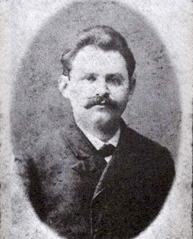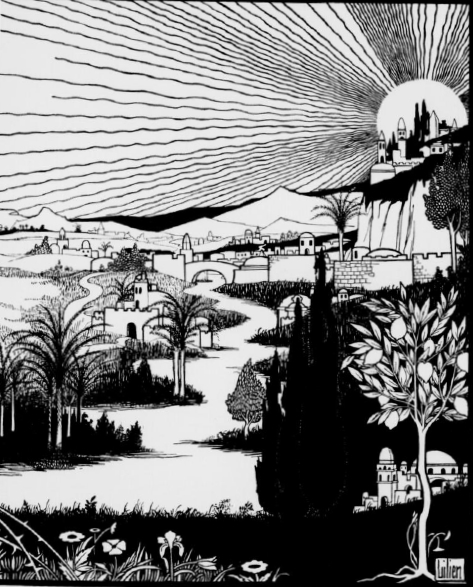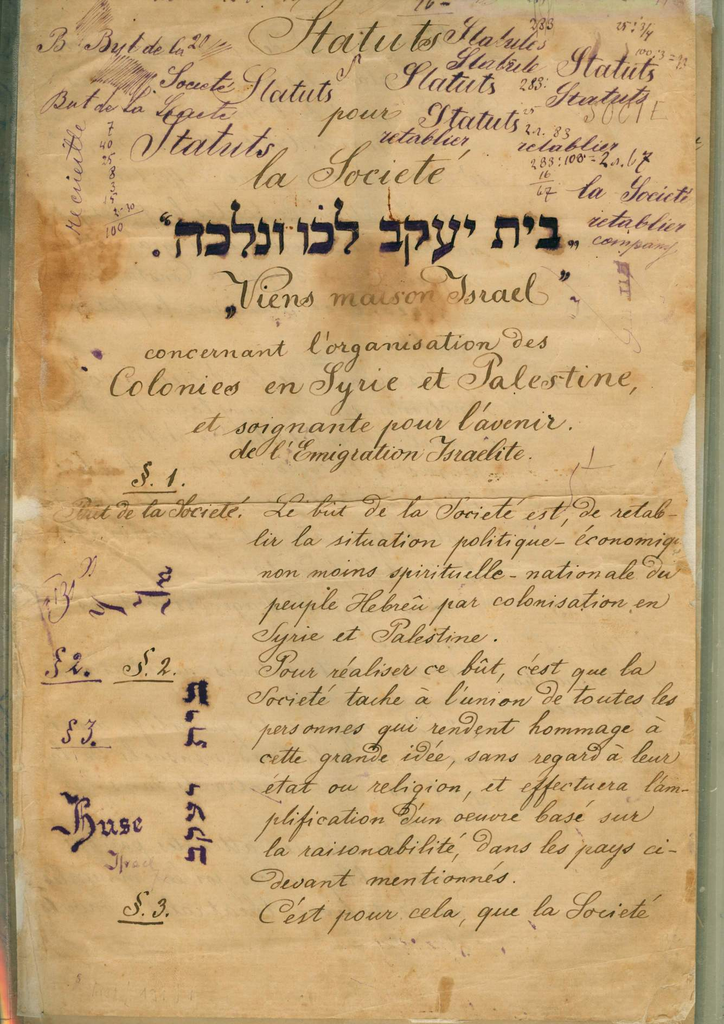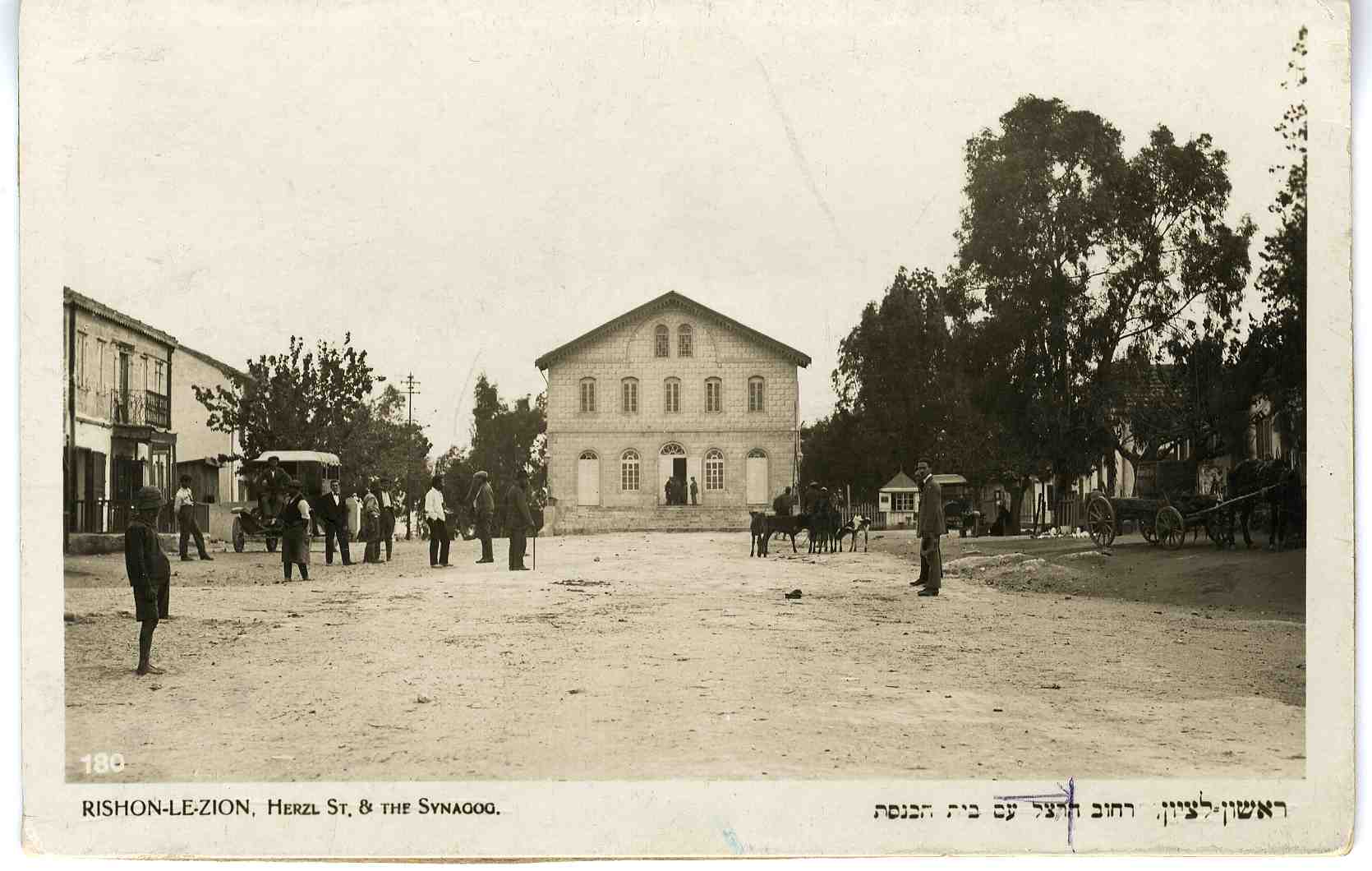|
Lovers Of Zion
Hovevei Zion ( he, חובבי ציון, lit. ''hose who areLovers of Zion''), also known as Hibbat Zion ( he, חיבת ציון), refers to a variety of organizations which were founded in 1881 in response to the Anti-Jewish pogroms in the Russian Empire and were officially constituted as a group at a conference led by Leon Pinsker in 1884. The organizations are now considered the forerunners and foundation-builders of modern Zionism. Many of the first groups were established in Eastern European countries in the early 1880s with the aim to promote Jewish immigration to Palestine, and advance Jewish settlement there, particularly agricultural. Most of them stayed away from politics. History Since the first centuries of the Common Era most Jews had lived outside Palestine, although there had been a constant presence of Jews there as well. According to the Bible and Judaism, Eretz Israel was promised to the Jews by God. The Jewish diaspora began in 586 BCE during the Babylonian ... [...More Info...] [...Related Items...] OR: [Wikipedia] [Google] [Baidu] |
Zion
Zion ( he, צִיּוֹן ''Ṣīyyōn'', LXX , also variously transliterated ''Sion'', ''Tzion'', ''Tsion'', ''Tsiyyon'') is a placename in the Hebrew Bible used as a synonym for Jerusalem as well as for the Land of Israel as a whole (see Names of Jerusalem). The name is found in 2 Samuel (5:7), one of the books of the Hebrew Bible dated to before or close to the mid-6th century BCE. It originally referred to a specific hill in Jerusalem ( Mount Zion), located to the south of Mount Moriah (the Temple Mount). According to the narrative of 2 Samuel 5, Mount Zion held the Jebusite fortress of the same name that was conquered by David and was renamed the City of David. That specific hill ("mount") is one of the many squat hills that form Jerusalem, which also includes Mount Moriah (the Temple Mount), the Mount of Olives, etc. Over many centuries, until as recently as the Ottoman era, the city walls of Jerusalem were rebuilt many times in new locations, so that the particular hill ... [...More Info...] [...Related Items...] OR: [Wikipedia] [Google] [Baidu] |
May Laws
Temporary regulations regarding the Jews (also known as May Laws) were proposed by the minister of internal affairs Nikolay Pavlovich Ignatyev and enacted on 15 May (3 May O.S.), 1882, by Tsar Alexander III of Russia. Originally, regulations of May 1882 were intended only as temporary measures until a future revision of the laws concerning the Jews but remained in effect for more than thirty years. Overview Regulations They read as follows: # "As a temporary measure, and until a general revision is made of their legal status, it is decreed that the Jews be forbidden to settle anew outside of towns and boroughs, exceptions being admitted only in the case of existing Jewish agricultural colonies." # "Temporarily forbidden are the issuing of mortgages and other deeds to Jews, as well as the registration of Jews as lessees of real property situated outside of towns and boroughs; and also the issuing to Jews of powers of attorney to manage and dispose of such real property." # "Jew ... [...More Info...] [...Related Items...] OR: [Wikipedia] [Google] [Baidu] |
Textbook
A textbook is a book containing a comprehensive compilation of content in a branch of study with the intention of explaining it. Textbooks are produced to meet the needs of educators, usually at educational institutions. Schoolbooks are textbooks and other books used in schools. Today, many textbooks are published in both print and digital formats. History The history of textbooks dates back to ancient civilizations. For example, Ancient Greeks wrote educational texts. The modern textbook has its roots in the mass production made possible by the printing press. Johannes Gutenberg himself may have printed editions of ''Ars Minor'', a schoolbook on Latin grammar by Aelius Donatus. Early textbooks were used by tutors and teachers (e.g. alphabet books), as well as by individuals who taught themselves. The Greek philosopher Socrates lamented the loss of knowledge because the media of transmission were changing. Before the invention of the Greek alphabet 2,500 years ago, knowledge ... [...More Info...] [...Related Items...] OR: [Wikipedia] [Google] [Baidu] |
Bilu (movement)
Bilu ( he, ביל"ו; also Palestine Pioneers) was a Jewish movement whose goal was the agricultural settlement of the Land of Israel. Its members were known as ''Bilu'im.'' Etymology "Bilu" is an acronym based on a verse from the Book of Isaiah ( 2:5) "" ''Beit Ya'akov Lekhu Venelkha'' ("House of Jacob, let us go p). History The wave of pogroms of 1881–1884 and antisemitic May Laws of 1882 introduced by Tsar Alexander III of Russia prompted mass emigration of Jews from the Russian Empire. On 6 July 1882, the first group of Bilu pioneers arrived in Ottoman Palestine. The group consisted of fourteen university students from Kharkiv led by Israel Belkind, later a prominent writer and historian. After a short stay at the Jewish farming school in Mikveh Israel, they joined Hovevei Zion ("Lovers of Zion") members in establishing Rishon LeZion ("First to Zion"), an agricultural cooperative on land purchased from the Arab village of Ayun Kara. Plagued by water shortages, illness ... [...More Info...] [...Related Items...] OR: [Wikipedia] [Google] [Baidu] |
Encyclopedia
An encyclopedia (American English) or encyclopædia (British English) is a reference work or compendium providing summaries of knowledge either general or special to a particular field or discipline. Encyclopedias are divided into articles or entries that are arranged alphabetically by article name or by thematic categories, or else are hyperlinked and searchable. Encyclopedia entries are longer and more detailed than those in most dictionaries. Generally speaking, encyclopedia articles focus on '' factual information'' concerning the subject named in the article's title; this is unlike dictionary entries, which focus on linguistic information about words, such as their etymology, meaning, pronunciation, use, and grammatical forms.Béjoint, Henri (2000)''Modern Lexicography'', pp. 30–31. Oxford University Press. Encyclopedias have existed for around 2,000 years and have evolved considerably during that time as regards language (written in a major international or a verna ... [...More Info...] [...Related Items...] OR: [Wikipedia] [Google] [Baidu] |
Encyclopaedia Judaica
The ''Encyclopaedia Judaica'' is a 22-volume English-language encyclopedia of the Jewish people, Judaism, and Israel. It covers diverse areas of the Jewish world and civilization, including Jewish history of all eras, culture, holidays, language, scripture, and religious teachings. As of 2010, it had been published in two editions accompanied by a few revisions. The English-language ''Judaica'' was also published on CD-ROM. The CD-ROM version has been enhanced by at least 100,000 hyperlinks and several other features, including videos, slide shows, maps, music and Hebrew pronunciations. While the CD-ROM version is still available, the publisher has discontinued it. The encyclopedia was written by Israeli, American and European professional subject specialists. History Preceding attempts Between 1901 and 1906 ''The Jewish Encyclopedia'' had been published in 12 volumes. It was followed by the ''Jüdisches Lexikon I–II'' (1927–28, in German), ''Encyclopaedia Judaica I–II ... [...More Info...] [...Related Items...] OR: [Wikipedia] [Google] [Baidu] |
New Yishuv
Yishuv ( he, ישוב, literally "settlement"), Ha-Yishuv ( he, הישוב, ''the Yishuv''), or Ha-Yishuv Ha-Ivri ( he, הישוב העברי, ''the Hebrew Yishuv''), is the body of Jewish residents in the Land of Israel (corresponding to the southern part of Ottoman Syria until 1918, OETA South 1917–1920, and Mandatory Palestine 1920–1948) prior to the establishment of the State of Israel in 1948. The term came into use in the 1880s, when there were about 25,000 Jews living across the Land of Israel and continued to be used until 1948, by which time there were some 630,000 Jews there. The term is still in use to denote the pre-1948 Jewish residents in the Land of Israel. A distinction is sometimes drawn between the Old Yishuv and the New Yishuv. The Old Yishuv refers to all the Jews living in the Land of Israel before the first Zionist immigration wave (''aliyah'') of 1882, and to their descendants who kept the old, non-Zionist way of life until 1948. The Old Yishuv resid ... [...More Info...] [...Related Items...] OR: [Wikipedia] [Google] [Baidu] |
Rishon LeZion
Rishon LeZion ( he, רִאשׁוֹן לְצִיּוֹן , ''lit.'' First to Zion, Arabic: راشون لتسيون) is a city in Israel, located along the central Israeli coastal plain south of Tel Aviv. It is part of the Gush Dan metropolitan area. Founded in 1882 by Jewish immigrants from the Russian Empire who were part of the First Aliyah, it was the first Zionist settlement founded in the Land of Israel by the New Yishuv and the second Jewish farm settlement established in Ottoman Syria in the 19th century, after Petah Tikva. As of 2017, it was the fourth-largest city in Israel, with a population of . The city is a member of Forum 15, which is an association of fiscally autonomous cities in Israel that do not depend on national balancing or development grants. Etymology The name Rishon LeZion is derived from a verse from the Tanakh: "First to Zion are they, and I shall give herald to Jerusalem" ) (Isaiah 41:27) and literally translates as "First to Zion". History Ottoma ... [...More Info...] [...Related Items...] OR: [Wikipedia] [Google] [Baidu] |
Reuven Yudalevich
Reuven Yudalevich (Yudelevitz, Yudelevitch) (1862–1933), was a funder and founder of the city of Rishon Le Zion, Israel. He was born in Kremenchuk, Russian Empire, to his father Yehuda. He eventually married Batya Wissel, daughter of Avraham Wissel and had one son, Moshe, before leaving the Russian Empire. He received a traditional education and began working as a clerk in a warehouse. He may have been a member of the Hovevei Zion movement. His generosity began at age twenty when he and his friend purchased a lottery ticket in monthly payments. Eventually his friend could not keep up the payments, so Reuven continued paying for his friend's portion of the lottery. He eventually won a large sum of money and gave half of the winnings to his friend as if his friend had continued paying all along. It is assumed he used the money to then travel to Palestine. He apparently met a group of Bilu pioneers made up of twelve men where, at the port of Smyrna, all of their money was stolen fr ... [...More Info...] [...Related Items...] OR: [Wikipedia] [Google] [Baidu] |
Isaac Leib Goldberg
Isaac Leib Goldberg ( he, יצחק לייב גולדברג, 7 February 1860 – 14 September 1935) was a Zionist leader and philanthropist in both Ottoman Palestine and the Russian Empire, and one of the principal founders of Rishon LeZion, the first Zionist settlement founded in the Land of Israel by the New Yishuv. An early member of the Hovevei Zion movement (1882), he also founded the Ohavei Zion society. Goldberg was a delegate to the First Zionist Congress and the founder of two Hebrew newspapers, Ha'aretz (today Israel's oldest daily newspaper) and Ha'am. Biography Isaac (Yitzchak) Leib Goldberg was born on 7 February 1860 in Szaki, Congress Poland (present-day Šakiai, Lithuania) to Alexander Sander HaLevi Goldberg and Liba Segal. His brother was Boris Goldberg. In his early years, Goldberg studied at Kovno Yeshiva and settled in Vilnius, Lithuania. His wife was Rachel Pinnes and they had five children, Hannah Tolkowsky (wife of Shmuel Tolkowsky), Shulamit Hochfeld ... [...More Info...] [...Related Items...] OR: [Wikipedia] [Google] [Baidu] |
Ukraine
Ukraine ( uk, Україна, Ukraïna, ) is a country in Eastern Europe. It is the second-largest European country after Russia, which it borders to the east and northeast. Ukraine covers approximately . Prior to the ongoing Russian invasion, it was the eighth-most populous country in Europe, with a population of around 41 million people. It is also bordered by Belarus to the north; by Poland, Slovakia, and Hungary to the west; and by Romania and Moldova to the southwest; with a coastline along the Black Sea and the Sea of Azov to the south and southeast. Kyiv is the nation's capital and largest city. Ukraine's state language is Ukrainian; Russian is also widely spoken, especially in the east and south. During the Middle Ages, Ukraine was the site of early Slavic expansion and the area later became a key centre of East Slavic culture under the state of Kievan Rus', which emerged in the 9th century. The state eventually disintegrated into rival regional po ... [...More Info...] [...Related Items...] OR: [Wikipedia] [Google] [Baidu] |
Kharkiv
Kharkiv ( uk, wikt:Харків, Ха́рків, ), also known as Kharkov (russian: Харькoв, ), is the second-largest List of cities in Ukraine, city and List of hromadas of Ukraine, municipality in Ukraine.Kharkiv "never had eastern-western conflicts" ''Euronews'' (23 October 2014) Located in the northeast of the country, it is the largest city of the historic Sloboda Ukraine, Slobozhanshchyna region. Kharkiv is the administrative centre of Kharkiv Oblast and of the surrounding Kharkiv Raion. The latest population is Kharkiv was founded in 1654 as Kharkiv fortress, and after these humble beginnings, it grew to be a major centre of industry, trade and Ukrainian culture in the Russian Empire. At the beginning of the 20th century, ... [...More Info...] [...Related Items...] OR: [Wikipedia] [Google] [Baidu] |


.jpg)



.jpg)

